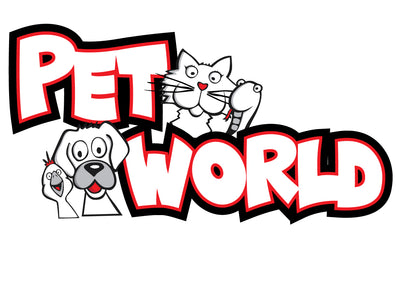Introduction
Here’s the thing about fish food: going for the most expensive tin or prettiest packaging doesn’t mean there’s a quality product inside!
How to Choose a High-Quality Fish Food
The absolute number one thing to do is ignore the hype and sales pitch on the front of the package and take a look at the ingredients list on the back.
-
Ingredients You Want
- Whole fish
- Algae meal – usually made from grinding up dehydrated Chlorella
- Spirulina – a blue-green algae (technically a cyanobacteria) that’s rich in vitamins and minerals as well as protein
- Krill – small shrimp-like crustaceans
- Squid meal
- Black soldier fly larvae
- Earthworms
- Black worms
These are all high-quality food sources that are nutrient dense and easily digestible. One or more of these should be among the first ingredients listed on the label.
-
Ingredients to Avoid
-
Low-Quality Fish Meal
- It’s made from the leftovers of the fishing industry. Fish processing plants cut the meat off the fish, leaving the guts, scales, skin, bones and other totally gross stuff.They gather all that wonderful garbage together and grind it up. Yes, it does contain protein, but it also contains a lot of indigestible things, too. When you’re looking at the label, if it just says “fish meal,” it’s the cheap stuff. High quality fish meal will usually be listed as “whole fish meal” or will list the species of fish it’s made of, like “whole menhaden meal.”
- Terrestrial grains/legumes
- Fish can’t digest things like soy or wheat gluten very well. Usually it just passes through their digestive system as waste that then breaks down in the tank and fouls your water.
- Even quality foods do include some terrestrial grain/legume products, so you can’t get away from it completely. But it’s better to go with a brand where terrestrial grain/legume is not one of the top three ingredients. That way, you know it makes up a much lower percentage of the food.
Types of Fish Food
-
Flakes
- Ingredients are ground together, dehydrated, spread paper thin and then baked.
- Flake food is best for top and mid-water feeding fish. Bottom feeders will eat flakes that sink to the substrate.
-
Pellets
- Pellets are similar to flakes but they’re made into small, dense balls or sticks instead of paper-thin flakes, kind of like dog kibble.
- Pellets can be floating, which is good for top feeding fish, or sinking, which is better for mid-water and bottom feeding fish. Pellets are a good choice for larger fish, like South American cichlids.
-
Sinking Wafers
- Very similar to pellets, these are hard disks of dry food that immediately sink. They’re meant for bottom-dwelling critters, like catfish and plecos.
- These are often sold under the name “algae wafers,” but you have to be careful, many contain little to no algae at all and are made of very poor ingredients.
-
Gel Food
- Gel food comes in a powder that you mix with boiling water. It sets up into a stiff gelatine, like Jelly for fish.
- Fish and invertebrates go crazy for this stuff. It’s especially great if you have sick fish since you can mix medications right into the food for easy delivery.
-
Freeze Dried
- Freeze dried foods are usually whole ingredients, like whole bloodworms or brine shrimp, that have been freeze dried.
- These have a great shelf life and are an excellent way to supplement your fish’s staple diet. Yes, we said supplement, as freeze dried food should be used just as a treat.
-
Frozen
- Frozen foods are whole ingredients that have been collected and frozen into cubes that you defrost and feed to your fish. Commonly available foods include bloodworms, brine shrimp, algae mixes or beef heart. We don’t suggest beef heart, as it can tax a fish’s kidneys and shorten their lifespan.
- These foods end up being about 70% water, so you need to feed your fish a bigger volume than if you were feeding a dry food.
-
Lives Foods
- Live foods are some kind of small animal that you feed to your fish. For example, daphnia, brine shrimp or ghost shrimp, feeder guppies, minnows or goldfish
- Not a great food for your fish, as “feeder” species are raised as cheaply as possible, often under very poor conditions. A feeder fish is only as nutritious as what it’s been eating. You also risk parasites and diseases being spread from the feeder fish to the fish in your display tank.
Final Words on Fish Food
The most important thing about shopping for fish food is to forget about the hype and look at the list of ingredients. You might be shocked to find that a lot of name brands contain low quality ingredients that are not good for your fish.
Do your best to avoid brands that are high in terrestrial grains/legumes since fish don’t digest these. These ingredients just pass through the digestive system, providing little benefit, and causing excess waste.
I hope that I’ve shared with you a solid beginner’s guide so that you can make informed decisions. If you’re going to part with your hard-earned cash, you and your fish should reap the greatest possible benefit.

